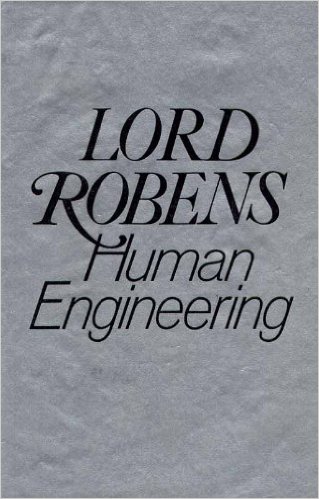 While researching a blog article I found a 1970 copy of Lord Robens‘ book “Human Engineering”. On page 124 of that book, Robens writes:
While researching a blog article I found a 1970 copy of Lord Robens‘ book “Human Engineering”. On page 124 of that book, Robens writes:
“The apathy towards safety in most industry results in the misuse of safety officers, where they exist. Indeed there are basically two types of safety officers: the professional performing his life’s work, and the man appointed (usually from the shop floor) so that the company can claim to have a safety officer. The latter usually does not posses the experience or training to undertake the vast amount of work expected of him. It has been mooted that standard would be raised by creating a professional status for these officials: an idea that should not be dismissed lightly.”
Such an attitude to workplace safety by many businesses continues to exist.
And if Robens thought that a professional status for safety officers was a good idea in 1970, how come Australia has only just instigated one? Why did it take so long? Why was professional status not considered necessary for over 40 years?
(For Australian readers here is a list of public libraries, or bookshops, that stock the Robens book. OHS students may find it offers a fascinating comparative study)

 LinkedIn is a useful adjunct to the social media of Facebook, MySpace and many other incarnations. The professional network is a terrific idea but it has several problems – one is misuse or misunderstanding LinkedIn’s function, the other is the ridiculousness of Endorsements. Given that LinkedIn is as popular in the OHS profession as in any other, the problems, as I see them, are worth discussing.
LinkedIn is a useful adjunct to the social media of Facebook, MySpace and many other incarnations. The professional network is a terrific idea but it has several problems – one is misuse or misunderstanding LinkedIn’s function, the other is the ridiculousness of Endorsements. Given that LinkedIn is as popular in the OHS profession as in any other, the problems, as I see them, are worth discussing.